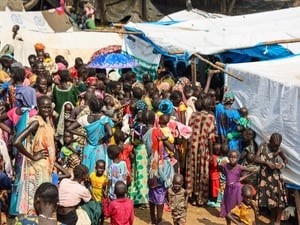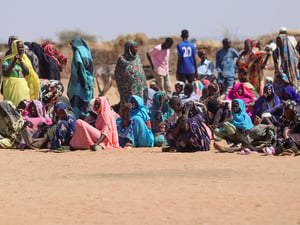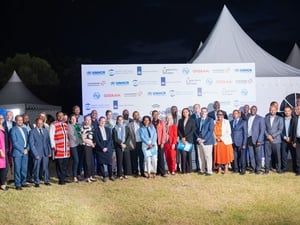Nearly 4,000 killed, civilian property destroyed in raging conflict in Sudan’s Darfur
Nearly 4,000 killed, civilian property destroyed in raging conflict in Sudan’s Darfur

Refugees fleeing the deadly violence in Darfur are arriving to sites like this one in Adré, in Chad, in dire need.
The escalation in fatalities and severe human rights violations against innocent civilians in Darfur, including refugees and internally displaced people, is worsening six months into the deadly conflict in Sudan, warns UNHCR, the UN Refugee Agency.
According to UNHCR’s newly released protection brief, nearly 4,000 civilians have been killed and 8,400 injured in Darfur, between 15 April and the end of August, with the majority believed to have been targeted mainly due to their ethnicity, particularly in West Darfur. Tragically, displaced children, including refugees, have been caught in the crossfire, killed or maimed as their schools were impacted by shelling. Those who have reached safe locations are battling acute psychological distress.
Civilian property has not been spared. At least 29 cities, towns and villages have been destroyed across Darfur after extensive looting and burning. Indiscriminate shooting and heavy shelling in camps and gathering sites sheltering displaced people have resulted in hundreds of casualties.
One hundred and thirty-nine civilian structures, including community water points, schools, markets and hospitals, have been destroyed, damaged, looted or occupied. Medical staff attempting to operate ad hoc clinics in private residences have been deliberately targeted.
Schools in Darfur have been closed, cutting off access to education and safe spaces for millions of children and exposing them to serious risks of sexual violence, distress, trauma and family separation. The number of unaccompanied and separated children is increasing. As the conflict has destroyed livelihoods, refugee children remain at heightened risk of abduction into forced labour, recruitment into armed groups, and of being trafficked.
Civilians trying to leave the region to search of safety have reportedly been prevented from fleeing or faced challenges at checkpoints, and have been arrested and detained.
UNHCR and partners continue to monitor the situation, including through community protection networks in all Darfur states, reaching over 90,000 people with information and services where possible. We have provided displaced families in North and West Darfur with core relief items and have provided four generators to health centres in North Darfur. Legal assistance has also been provided to refugees, including those in detention. Security permitting, awareness sessions on gender violence and social activities to promote cohesion among communities have been organized. However, more donor support is urgently required to ensure critical protection services are provided to those who need them.
UNHCR continues to call upon the parties to the conflict to guarantee the protection of civilians, including refugees and internally displaced people (IDPs), and to ensure safe passage of humanitarian assistance. Ultimately, the conflict in Sudan, including in the Darfur region, must end.
Funding shortfalls are still making it difficult to respond to the needs of people, both within Sudan and in the neighbouring countries. The Sudan Humanitarian Response Plan, which aims to reach 17 million people inside the country, is only one third funded, and the Sudan Regional Refugee Response Plan, which calls for $1 billion to meet the needs of 1.8 million people in Chad, Central African Republic, Egypt, Ethiopia and South Sudan, is only 29 per cent funded.
For additional information:
In Sudan:
- Assadullah Nasrullah, UNHCR, [email protected] +249 912 178 991
In Nairobi:
- Faith Kasina, UNHCR, [email protected] +254 113 427 094
In Geneva:
- William Spindler, UNHCR, [email protected]; +41 79 549 5998









